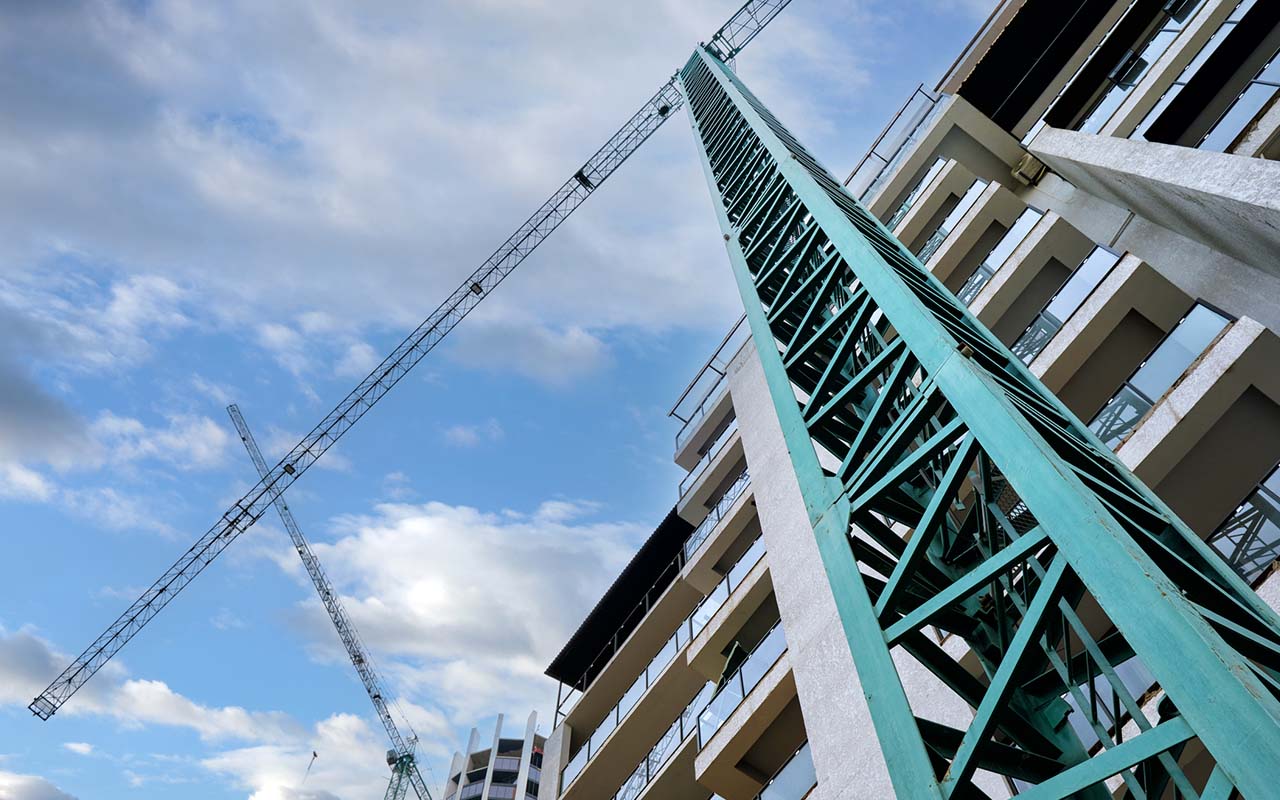April 28, 2020
Treasury Releases Guidance for Taxpayers Seeking to Take Advantage of CARES Act Provisions Relaxing Interest Deduction Limitations and Providing Full Expensing of Qualified Improvement Property
The United States Treasury Department (“Treasury”) recently issued (i) Revenue Procedure 2020-22 setting forth procedures for taxpayers to withdraw an election under Code Section 163(j)(7)(B) to be treated as a “real estate trade or business” with retroactive effect for tax years 2018 and 2019 (“Rev. Proc. 2020-22”) and (ii) Revenue Procedure 2020-25 setting forth procedures for taxpayers to take advantage of the recent technical correction to the rules for deducting the cost of “qualified improvement property” (“Rev. Proc. 2020-25” and together with Rev. Proc. 2020-22, the “Guidance”). Collectively, the Guidance sets forth how taxpayers, particularly real estate businesses, can take advantage of some of the more generous tax relief provisions enacted under the Coronavirus Aid, Relief, and Economic Security Act, P.L. 116-136 (the “CARES Act”).
Background
The Tax Cuts and Jobs Act of 2017 (the “TCJA”) placed limits on the amount of business interest expense that a taxpayer could deduct for federal income tax purposes. Specifically, business interest expense deductions for tax years beginning after December 31, 2017 and before December 31, 2027 are generally[1] limited to 30% of the adjusted taxable income of a taxpayer (the “Section 163(j) Limitation”).[2] However, under Section 163(j)(7)(A)(ii), the Section 163(j) Limitation does not apply to an electing “real property trade or business” (an “RPTB”). A business is generally eligible to make an election to be an electing RPTB (an “RTPB Election”) if it is a real property development, redevelopment, construction, reconstruction, acquisition, conversion, rental, operation, management, leasing or brokerage trade or business.[3] Generally, an RPTB Election is irrevocable.
As a trade-off for electing out of the Section 163(j) Limitation, any business making an RPTB Election is required to depreciate its real estate assets using the alternative depreciation system (“ADS”), resulting in smaller annual depreciation deductions for such assets and is not eligible to use other methods of depreciation, including bonus depreciation. Real estate assets subject to ADS depreciation by reason of an RPTB Election include nonresidential real property, residential rental property and “qualified improvement property,” which generally includes any improvements to the interior portion of nonresidential real property that do not enlarge the building or improve its internal structural framework (other than elevators or escalators) (such improvements, “Qualified Improvement Property”).
The effect of this trade-off is that real estate businesses generally have to choose between the value of the larger business interest expense deduction (by reason of an election out of the Section 163(j) Limitation) and the value of larger depreciation deductions for real estate assets (by reason of refraining from making an election out of the Section 163(j) Limitation and, therefore, avoiding ADS). Prior to the CARES Act, for businesses with significant amounts of Qualified Improvement Property, this RPTB Election was made because bonus depreciation was not available for Qualified Improvement Property.
However, certain provisions of the CARES Act are likely to reframe this analysis for real estate businesses and cause such businesses to reconsider their prior choices. Specifically, the CARES Act provides that for businesses that are not taxed as a partnership, the Section 163(j) Limitation is increased from 30% to 50% of adjusted taxable income for taxable years beginning in 2019 and 2020.[4] For businesses, taxed as partnerships, the CARES Act limits the increased Section 163(j) Limitation to taxable years beginning in 2020. However, unless a partner elects otherwise, the partner’s share of any excess business interest of the partnership (i.e., the interest expense of the partnership that is disallowed under Section 163(j)) for any taxable year beginning in 2019 is subject to a special rule pursuant to which (i) 50% of such excess business interest is treated as interest expense of the partner for the partner’s 2020 taxable year and is deductible without being subject to the Section 163(j) Limitation, and (ii) the other 50% of such excess business interest continues to be subject to the normal Section 163(j) rules (the “Suspended 2019 Deduction”).[5] Thus, businesses taxed as partnerships that have not made an RPTB Election (or who decide to rescind such election pursuant to Rev. Proc. 2020-22, discussed below) will be able to make a significantly increased interest deduction in 2020 because of (i) the application of the 50% Section 163(j) Limitation on business interest paid in 2020 and (ii) the Suspended 2019 Deduction, which will be applied in 2020.
Additionally, the CARES Act contains a so-called “technical fix” pursuant to which Qualified Improvement Property is retroactively available for 100% expensing (“Bonus Depreciation”)[6] under Section 168(k) for Qualified Improvement Property placed in service after December 31, 2017.
Pursuant to these CARES Act changes, a real estate business may now prefer to no longer be an RPTB. The benefit of reversing such an election (i.e., electing back into the Section 163(j) Limitation) is potentially two-fold: a real estate business (i) may benefit from the immediate expensing of Qualified Improvement Property placed in service in 2018, 2019 or 2020 and also (ii) be less economically affected by the Section 163(j) Limitation (due to the relaxation of that limitation and the Suspended 2019 Deduction).
The Guidance sets forth procedures for taxpayers wishing to make use of the CARES Act changes, including making certain elections with retroactive effect for tax years 2018 and 2019.
Revenue Procedure 2020-22
Rev. Proc. 2020-22 provides that taxpayers who previously made an RPTB Election will be treated as having never made such an election for tax years 2018, 2019 or 2020 if they file an amended return or an administrative adjustment request under Code Section 6227 (an “AAR”), as applicable, for such year and include an election withdrawal statement. The amended return or AAR must be filed by October 15, 2021. However, partnerships subject to the centralized partnership audit regime enacted as part of the Bipartisan Budget Act of 2015 (such partnerships “BBA Partnerships”) wishing to retroactively reverse an RPTB Election for tax years 2018 or 2019 are generally required to follow the procedures set forth in Revenue Procedure 2020-23, which allow BBA Partnerships to file amended partnership returns and issue amended Schedule K-1s for such years instead of filing an AAR. (For a Nelson Mullins’ analysis of Revenue Ruling 2020-23 select this link.) Any BBA Partnership that chooses not to file an amended partnership return pursuant to Revenue Procedure 2020-23 may reverse an RPTB Election by filing an AAR on or before October 15, 2021.
Any retroactive withdrawal of an RPTB Election included in an amended return or AAR filed pursuant to Rev. Proc. 2020-22 must include a statement titled, Revenue Procedure 2020-22 Section 163(j)(7) Election Withdrawal and must contain: (i) the taxpayer’s name, (ii) the taxpayer’s address, (iii) the taxpayer’s social security number or employer identification number, as applicable, and (iv) a statement that, pursuant to Revenue Procedure 2020-22, the taxpayer is withdrawing its election under Section 163(j)(7)(B).
In addition, a taxpayer making a retroactive withdrawal of an RPTB Election must re-determine its depreciation on its amended return or AAR for property that will, by reason of such withdrawn election, not be depreciated under ADS. As discussed above, a withdrawn RPTB Election frees up a taxpayer to expense Qualified Improvement Property pursuant to Bonus Depreciation if such property was placed in service a tax year covered by the withdrawn RPTB Election. Accordingly, any resulting changes in depreciation deductions are to be included on the amended return or AAR for such year.
Notably, Rev. Proc. 2020-22 included procedures for several other elections that may be made or reversed pursuant to CARES Act provisions. Among these is the election available to taxpayers to use their 2019 adjusted taxable income to calculate their 2020 Section 163(j) Limitation (the “2019 ATI Election”) or the election not to apply the 50% adjusted taxable income limitation to any tax year beginning in either 2019 or 2020, retaining the application of the 30% limitation (the “30% Limitation Election”). A taxpayer may make a 2019 ATI Election or 30% Limitation Election by timely filing their 2020 tax return or amended tax return or AAR. No formal statement is required to make either election.
Revenue Procedure 2020-25
Rev. Proc. 2020-25 provides that taxpayers with Qualified Improvement Property placed in service after December 31, 2017 in the taxpayer’s 2018, 2019 or 2020 taxable year who seek to fully expense such property pursuant to Bonus Depreciation may do so by filing an amended the tax return, an AAR or a Form 3115, Application for Change in Accounting Method, for such taxable year. However, Rev. Proc. 2020-25 does not apply to a taxpayer withdrawing an RPTB Election pursuant to Rev. Proc. 2020-22 who may also be seeking to expense the cost of Qualified Improvement Property pursuant to Bonus Depreciation. As discussed above, such taxpayers are instead required to re-determine on their amended tax return or AAR any changes in depreciation applicable as a result of the withdrawn of an RPTB Election.
If you have any questions or comments about the foregoing summary of the Guidance, please contact Sabrina Conyers, Wells Hall, Maurice Holloway, Gene Crick or Drew Hermiller who have contributed to the preparation of this Report.
[1] The 30% interest deduction limitation did not apply to corporations or partnerships with average annual gross receipts for the three previous taxable years of $25,000,000 or less. See Sections 163(j)(5) and 448(c) of the Internal Revenue Code of 1986, as amended (the “Code”). References to “Section” in this Report refer to Sections of the Code and references to “Treas. Reg. Section” refer to Treasury Regulations promulgated under the Code.
[2] Section 163(j)(1).
[3] Sections 163(j)(7)(B), 469(c)(7)(C).
[4] For tax years beginning in 2020, the CARES Act also allows businesses to elect to use their 2019 adjusted taxable income to calculate the relaxed Section 163(j) Limitation (which will likely be higher due to the economic downturn).
[5] Section 163(j)(10)(ii)(II). Under Section 163(j)(4)(B)(i), the amount of any business interest not allowed as a deduction due to the limitation on business interest under Section 163(j)(1) (“Excess Business Interest”), for any taxable year shall not be treated as business interest paid or incurred by the partnership in the succeeding taxable year under Section 163(j)(2), but, subject to reduction (as set forth below), shall be treated as Excess Business Interest which is allocated to each partner in the same manner as non-separately stated taxable income of the partnership. Under Section 163(j)(4)(B)(ii), if a partner is allocated any Excess Business Interest from a partnership for any taxable year, the Excess Business Interest shall be treated as business interest paid or incurred by the partner in the next succeeding taxable year in which the partner is allocated excess taxable income from the partnership but only to the extent of excess taxable income and any portion is such excess business expense limited by excess taxable income for such year shall be treated as business interest paid or incurred in succeeding taxable years. Under Section 163(j)(4)(C), excess taxable income means, with respect to a partnership, the amount which bears the same ratio to the partnership’s adjusted taxable income under Section 163(j)(8) as the excess (if any), of the amount determined for the partnership under Section 163(j)(1)(B) (30% or 50% of adjusted taxable income of the partnership for such taxable year (the “Percentage Limitation”), over the amount, if any, by which business interest expense, reduced by the floor plan financing interest, of the partnership exceeds the business interest income of the partnership, bears to the Percentage Limitation. For example, assume the adjusted taxable Income of the partnership is $100, business interest expense is $15 and there is no business interest income or floor plan financing interest. Under these assumed facts, the excess taxable income would be $50 (15/30 multiplied by $100).
[6] The TCJA provided for 100% immediate expensing by businesses of the cost of depreciable tangible assets with a recovery period of 20 years or less, such as machinery and equipment, if such assets were purchased in tax years 2018 through 2022. See Section 168(k). A Conference Report for the TCJA described Congress’ intent to treat Qualified Improvement Property as property that would be depreciable over a 15-year schedule, which would render it eligible for Bonus Depreciation. However, the language of Section 168(k) (setting forth Bonus Depreciation) as incorporated into the TCJA failed to achieve that result. As a result, Qualified Improvement Property was not eligible for Bonus Depreciation and was instead required to be depreciated over 39 years. The CARES Act included language clarifying that Qualified Improvement Property has a recovery period of 15 years and is eligible for Bonus Depreciation. The change is effective for Qualified Improvement Property placed in service after December 31, 2017 in a tax year ending in 2018, 2019 or 2020.










